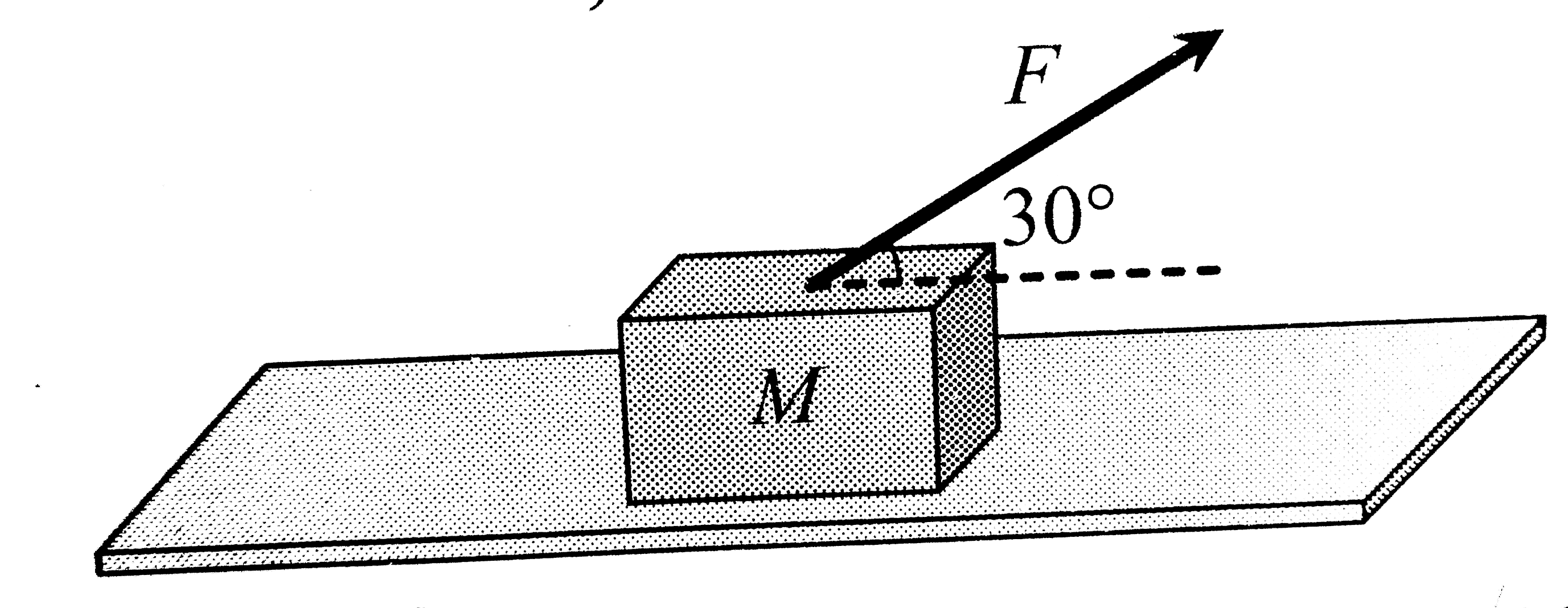A body of mass 5kg rests on a rough horizontal surface of coefficient of friction 0.2. The body is pulled through a distance of 10m by a horizontal force of 25N. The kinetic energy acquired by the body is (g=
250 J
200 J
150 J
100 J
The correct Answer is:C
To solve the problem step by step, we will follow the principles of physics related to forces, friction, and work-energy theorem.
Step 1: Calculate the Normal Force
The normal force (N) acting on the body can be calculated using the formula:
N=mg
Where:
- m=5kg (mass of the body)
- g=10m/s2 (acceleration due to gravity)
Calculating:
N=5kg×10m/s2=50N
Step 2: Calculate the Frictional Force
The frictional force (f) can be calculated using the formula:
f=μN
Where:
- μ=0.2 (coefficient of friction)
Calculating:
f=0.2×50N=10N
Step 3: Calculate the Net Force
The net force (F_net) acting on the body can be calculated by subtracting the frictional force from the applied force (F):
Fnet=F−f
Where:
- F=25N (applied force)
Calculating:
Fnet=25N−10N=15N
Step 4: Calculate the Work Done on the Body
The work done (W) on the body can be calculated using the formula:
W=Fnet×s
Where:
- s=10m (distance pulled)
Calculating:
W=15N×10m=150J
Step 5: Calculate the Kinetic Energy Acquired by the Body
According to the work-energy theorem, the kinetic energy (KE) acquired by the body is equal to the work done on it:
KE=W
Thus:
KE=150J
Final Answer
The kinetic energy acquired by the body is 150J.
---
The normal force (N) acting on the body can be calculated using the formula:
N=mg
Where:
- m=5kg (mass of the body)
- g=10m/s2 (acceleration due to gravity)
N=5kg×10m/s2=50N
The frictional force (f) can be calculated using the formula:
f=μN
Where:
- μ=0.2 (coefficient of friction)
f=0.2×50N=10N
The net force (F_net) acting on the body can be calculated by subtracting the frictional force from the applied force (F):
Fnet=F−f
Where:
- F=25N (applied force)
Fnet=25N−10N=15N
The work done (W) on the body can be calculated using the formula:
W=Fnet×s
Where:
- s=10m (distance pulled)
W=15N×10m=150J
According to the work-energy theorem, the kinetic energy (KE) acquired by the body is equal to the work done on it:
KE=W
Thus:
KE=150J
The kinetic energy acquired by the body is 150J.
Topper's Solved these Questions
- BOOK - AAKASH SERIESCHAPTER - LAWS OF MOTIONEXERCISE - EXERCISE - II136videos
LAWS OF MOTION
- BOOK - AAKASH SERIESCHAPTER - GEOMETRICAL OPTICSEXERCISE - ADDITIONAL PRACTICE EXERCISE (LEVEL-II PRACTICE SHEET (ADVANCED) INTEGER TYPE QUESTIONS)10videos
GEOMETRICAL OPTICS
- BOOK - AAKASH SERIESCHAPTER - LOGIC GATESEXERCISE - Exercise (Very Short Answer)10videos
LOGIC GATES
Similar Questions
A block of mass 10 kg is placed on a rough horizontal surface of coefficient of friction 0.1. A pulling force of 100 N acts on it at 37∘ with the horizontal. The frictional force acting on the body is ..... N.
View SolutionA uniform force of 4 N acts on a body of mass 10 kg for a distance of 2.0 m . The kinetic energy acquired by the body is
View SolutionA body of mass 2kg is kept on a rough horizontal surface as shown in the figure. If coefficient of friction is 0.5, find the work done by frictional force in the interval t=0 to t=5sec
 View Solution
View SolutionA body of mass 5kg is under the action of 50N on the horizontal surface. If coefficient of friction in between the surfaces is one, the distance it travels in 3 s is
View SolutionA block of mass 5kg is lying on a rough horizontal surface. The coefficient of static and kinetic friction are 0.3 and 0.1 and g=10ms−2 The frictional force on the block is
View SolutionA block of mass 10kg is placed on a rough horizontal surface having coefficient of friction μ=0.5 . If a horizontal force of 100N is acting on it, then acceleration of the will be.
View SolutionA block of mass 10kg is placed on a rough horizontal surface having coefficient of friction μ=0.5 . If a horizontal force of 100N is acting on it, then acceleration of the will be.
View SolutionA 2kg block is placed over a 5kg block and both are placed on a smooth horizontal surface. The coefficient of friction between the blocks is 0.10. Find the acceleration of the two blocks if a horizontal force of 14N is applied to the upper block (g = 10ms−2).
View SolutionA block of mass 20 kg is on a horizontal plane of a coefficient of friction 0.5. by applying 6.0 newton force on it, frictional force will be (g=10m/s2).
View SolutionA block of mass m=5kg is resting on a rough horizontal surface for which the coefficient of friction is 0.2 . When a force F=40N is applied, the acceleration of the block will be (g=10m/s2) .
 View Solution
View Solution

